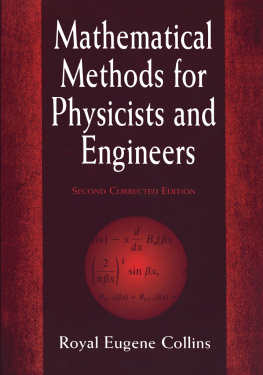Erich Miersemann - Mathematical Theory of Liquid Interfaces: Liquid Layers, Capillary Interfaces, Floating Drops and Particles
Here you can read online Erich Miersemann - Mathematical Theory of Liquid Interfaces: Liquid Layers, Capillary Interfaces, Floating Drops and Particles full text of the book (entire story) in english for free. Download pdf and epub, get meaning, cover and reviews about this ebook. year: 2020, publisher: World Scientific Publishing Company, genre: Home and family. Description of the work, (preface) as well as reviews are available. Best literature library LitArk.com created for fans of good reading and offers a wide selection of genres:
Romance novel
Science fiction
Adventure
Detective
Science
History
Home and family
Prose
Art
Politics
Computer
Non-fiction
Religion
Business
Children
Humor
Choose a favorite category and find really read worthwhile books. Enjoy immersion in the world of imagination, feel the emotions of the characters or learn something new for yourself, make an fascinating discovery.
- Book:Mathematical Theory of Liquid Interfaces: Liquid Layers, Capillary Interfaces, Floating Drops and Particles
- Author:
- Publisher:World Scientific Publishing Company
- Genre:
- Year:2020
- Rating:3 / 5
- Favourites:Add to favourites
- Your mark:
Mathematical Theory of Liquid Interfaces: Liquid Layers, Capillary Interfaces, Floating Drops and Particles: summary, description and annotation
We offer to read an annotation, description, summary or preface (depends on what the author of the book "Mathematical Theory of Liquid Interfaces: Liquid Layers, Capillary Interfaces, Floating Drops and Particles" wrote himself). If you haven't found the necessary information about the book — write in the comments, we will try to find it.
This book lays a unique and straightforward mathematical foundation on the aspects of liquid layers, capillary interfaces, floating drops and particles. For the first time, these topics are studied in a joint framework. Readers will acquire deeper comprehension and gain results. Practical interest are presented, making it beneficial to engineers and physicists as well as mathematicians.
The text takes an insight-oriented approach that gives it immediacy and flexibility. It contains 70 problems where some are exercises, while others are open problems. It is also illustrated with 95 figures and photographs for further understanding.
Erich Miersemann: author's other books
Who wrote Mathematical Theory of Liquid Interfaces: Liquid Layers, Capillary Interfaces, Floating Drops and Particles? Find out the surname, the name of the author of the book and a list of all author's works by series.











